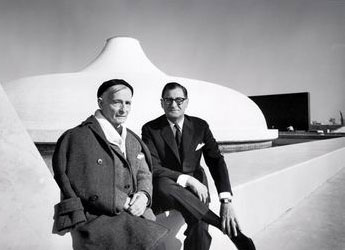The Shrine of the Book
The Hebrew Bible is the cornerstone of the Jewish people. Virtually all Jewish creativity refers to this fundamental text, and it has also left its imprint on Christianity and Islam.
The exhibition at the Shrine of the Book Complex in the Israel Museum, Jerusalem represents a journey through time, which, adopting a scholarly-historical approach, traces the evolution of the Book of Books. The upper galleries take the visitor from the oldest extant biblical manuscripts, which were discovered in the Judean Desert, through the story of the sectarians living at Qumran, who attempted to translate the biblical ideals embodied in these texts into a way of life. The lower galleries tell the remarkable tale of the Aleppo Codex – the most accurate manuscript of the Masoretic text and the closest to the text of the printed Hebrew Bibles used today.
Generations of scribes and scholars dedicated themselves to copying the Hebrew Bible, passing on the traditions related to its reading and cantillation, and interpreting its meaning. Those who cherished it did anything in their power to protect it from harm, at times even enduring martyrdom for its sake. Though the motivation for this esteem, which continues until the present day, may take different forms – belief in the divine origins of the biblical text, admiration for the profundity of its ideas, or acknowledgement of its historical cultural importance – one thing remains clear: as long as people continue to inquire about the nature of life and the world in which we live, the Hebrew Bible will continue to inspire creativity, comfort the troubled, and provide hope for individuals wherever they may be.
The Shrine of the Book was built as a repository for the first seven scrolls discovered at Qumran in 1947. This symbolic building, a kind of sanctuary intended to express profound spiritual meaning, is considered an international landmark of modern architecture. Designed by American Jewish architects Armand P. Bartos and Frederic J. Kiesler, it was dedicated in an impressive ceremony on April 20, 1965. Its location next to official institutions of the State of Israel – the Knesset (Israeli Parliament), key government offices, and the Jewish National Library – attests to the degree of national importance that has been accorded the ancient texts and the building that preserves them.
The white dome symbolizes the lids of the jars in which the first scrolls were found; the contrast between the white dome and the black wall alongside it alludes to the tension evident in the scrolls between the spiritual world of the "Sons of Light" (as the Judean Desert sectarians called themselves) and the "Sons of Darkness" (the sect's enemies). The corridor leading into the Shrine resembles a cave, recalling the site where the ancient manuscripts were discovered.

The Shrine of the Book

Armand P. Bartos (Right) and Frederic J. Kiesler (Left)
Photo by David Harris